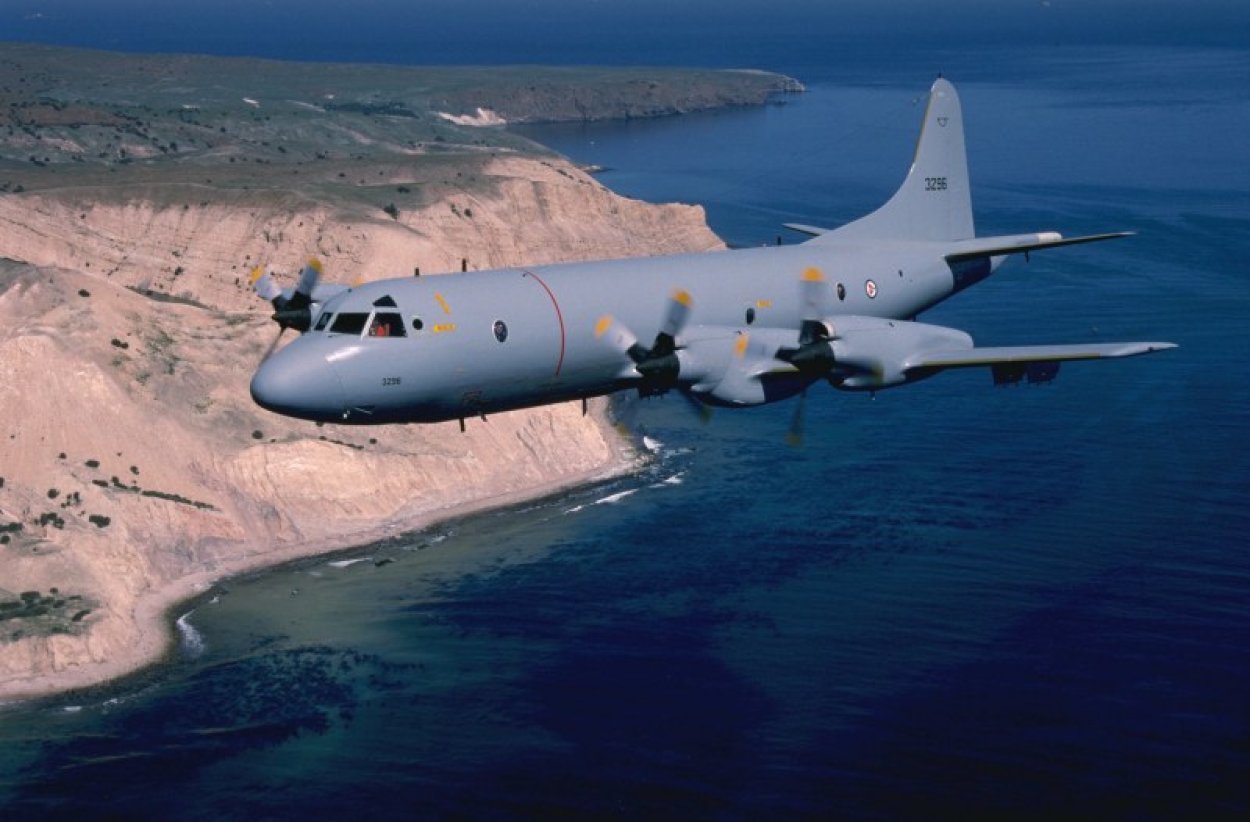Four years after losing anti-submarine and maritime surveillance capability, Argentina will re-acquire it soon as it signs an agreement with Norway for Lockheed Martin-built P-3 Orions on October 18, ahead of a much-awaited purchase order for F-16 fighters.
South Korea’s KF-21 ‘Stealth’ Fighter Jet Takes Center Stage In Debut Appearance At Seoul ADEX
After over six decades of service, the Royal Norwegian Air Force retired its P-3 Orion maritime surveillance aircraft in June 2023. Lockheed Martin’s P-3 Orion is a land-based, long-range aircraft equipped with four Allison T56-A-14 engines to stay aloft for long periods and support high-altitude reconnaissance missions.
It is used for submarine hunting, over-land peacekeeping, relaying real-time video surveillance, and supporting anti-terrorism operations.
“Tomorrow (October 18), Argentina and Norway will officially sign the agreement to procure the 4xP-3C/N aircraft. This is the first of two major deals recently accepted by the US State Department, with the other being the F-16s, which could also come soon,” SA Defensa, a South American defense agency, said on X.
“With this, Argentina will officially recover its anti-submarine operations lost with the grounding of the P-3B in 2019. A long four years for the navy,” it added.
The deal will culminate in a long-drawn hunt by the South American country to replace its grounded P-3B fleet. Three surplus Norwegian P-3C aircraft are fitted for maritime surveillance, anti-submarine, and anti-surface missions, and one P-3N is designed for search and rescue operations. The procurement is expected to cost around US$67 million.
Argentina earlier intended to acquire surplus P-3Cs from the US Navy. However, the American aircraft would have required refurbishment that exceeded the Argentine government’s budget.
To be delivered later this year, the P-3s will bolster the capabilities of the Argentine Navy’s surveillance squadron based at the Almirante Zar Air Naval Base near Trelew along the Patagonian coast of southern Argentina. Since 1997, the unit has operated P-3Bs acquired from the US Navy, but they have been grounded since 2019.
Between 2009 and 2016, before Norway decided to replace its P-8s, all of the country’s P-3s underwent life extension and upgrade work. The upgrade included Lockheed Martin replacing wings and parts of the horizontal stabilizers using components made of new alloys more resistant to fatigue and corrosion.
The P-3C mission systems underwent an upgrade with the integration of AN/USQ-78B acoustic processor technology refresh, AN/ASQ-227 aircraft mission computers, and tactical mobile acoustic support systems.
The retired Norwegian aircraft will be first sent to the US before proceeding to Argentina. Argentinian Cabinet Chief Agustín Rossi said the acquisition would allow sustained surveillance of the country’s territories for the next 20 years.
“Even though the acquisition of a new, long-range maritime surveillance aircraft should have taken place several years ago, it is still an excellent and important step toward increasing surveillance, control, and protection of Argentina’s extended exclusive economic zone,” Luis Piñeiro, an independent defense and security analyst based in Buenos Aires, was quoted by Defense News.
“Illegal fishing, which is causing losses of US$2.6 billion each year to this country, will be from now prevented and fought more effectively with the support of newer and more capable (maritime patrol aircraft).”
Fighter Jet Vendors Await Argentina’s Decision
The deal for P-3C is expected to be followed by Argentina’s announcement finalizing the fighter jet for its Air Force. The US State Department with Danish F-16 fighters, China-Pakistan with their JF-17, and India with its LCA ‘Tejas’ are awaiting the outcome of this long-winding acquisition.
Argentina’s quest to fill the capability void left by the retirement of 16 Dassault Mirage III fighter jets in 2015 has been full of deft political maneuvering and deal sweeteners offered to bag the order. China has proposed to replace the “faulty” engines of the JF-17, and India offered to replace the 16 identified components of its indigenous fighter jets.

But the US, wary of burgeoning Chinese influence in its backyard, moved with alacrity to get Congressional approval for selling the Danish F-16 fighter jets, initially intended for Ukraine. Argentina has been without a first-line fighter jet in its inventory since 2015.
“In a little-noticed decision, the United States has agreed to the potential sale by Denmark of up to 33 used F-16 Fighting Falcon fighter aircraft to Argentina. The transaction would give Argentina’s Air Force a long-awaited modern fighter fleet, undermine China’s effort to sell an alternative aircraft to Argentina, and signal a loosening of informal US restrictions on military support for Argentina that date to the Falklands War four decades ago,” Richard Sanders said decoding the latest development.
Deputy Assistant Secretary for Regional Security Mira Resnick conveyed the US State Department approval for transferring the F-16 aircraft from Norway to Argentina. “The transfer reaffirms our close defense ties and steadfast support for Argentina’s air force modernization efforts,” Resnick said.
- Ritu Sharma has been a journalist for over a decade, writing on defense, foreign affairs, and nuclear technology.
- She can be reached at ritu.sharma (at) mail.com
- Follow EurAsian Times on Google News




